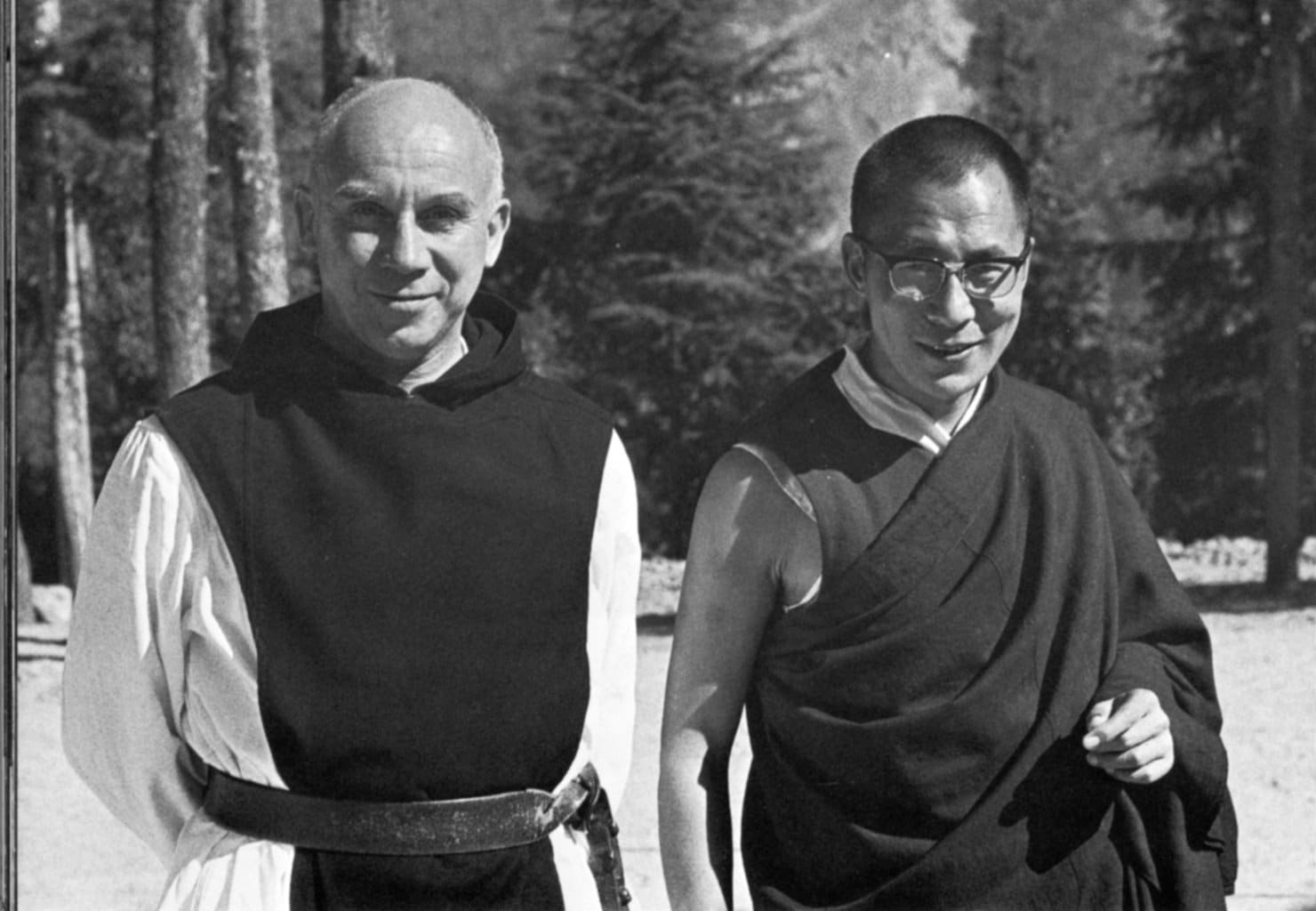It’s fifty years since I discovered Thomas Merton’s book The Seven Storey Mountain. Like many before and since, I was deeply moved by his story–the turmoils of his early years, his desire to write, his discovery of prayer, his burgeoning vocations to the priesthood and the religious life, his passion for God. I never forgot the deep impact that the book had made on me, and I found over the years in my work as a priest that I continued to be drawn to him as his later writings–so insightful, so pertinent–spoke with a new compulsion about God, and the world in which we live, and the meaning of prayer, and the challenge of discipleship.
The opportunity ten years ago to teach Thomas Merton in an Oxford summer school gave me the push I finally needed to research in some depth something of the meaning of this remarkable man.
Merton’s Paradoxes
My first book on Merton–under the title Divine Discontent: The Prophetic Voice of Thomas Merton (Bloomsbury 2014)–allowed me the opportunity to explore his parallel vocations as a Trappist monk, a writer, a contemplative, a social critic and an ecumenist, but also gave me the chance to see something of the shadow side, the discontents, the paradoxes and the contradictions with which he lived.
Everything I found–his story and his writings–brought home time and again the degree to which this deeply human man speaks nonetheless with a prophetic voice to our world today. Merton understood the fantasies and the seductions of the contemporary scene, the abuses of power, the interdependence of all life. For him, the boundary markers were always the priority of God, the priority of the individual, the priority of freedom and the priority of conscience. What he sought was a global consciousness, a global vision.
It was an easy step to go on to assemble a second book, which might have been simply an anthology drawn from Merton’s many writings but, encouraged by Franciscan Media, it seemed right to take a further step and bring into the collection a fair number of his abstract drawings–drawings which are largely unknown and which, together with brief reflections, might serve as resting places for all who use the anthology, complementing the quotations and opening up new possibilities.
Exploring the ‘Strange Blobs of Ink’
Merton’s drawings developed a great deal over the years as simple line drawings gave way to brush and ink drawings, and these in turn gave way to entirely new images as he explored a unique printmaking technique.
Merton was known to speak dismissively of his drawings as “strange blobs of ink,” but they were for him exercises in observation and engagement, and many have found in them something of the mental energy, the openness to new possibilities, and the freedom of interpretation that can be seen in so many areas of his life. What is so telling is his refusal to provide a title for nearly all of his drawings, because of his desire to let the observer find his or her own interpretation.
One of the brothers at the Abbey of Gethsemane spoke of Merton’s great gift of “understanding what I want to be, or what I’m trying to be, or what I’ve been through, or what I’m coping with.” Many readers of The Art of Thomas Merton will find something of the truth of those words in the words and drawings brought together in this collection.
But the magic and the meaning continue to escape us until–like Merton–we find something of the truth about God, the truth about our world, the truth about ourselves. There is the true art of Thomas Merton.


